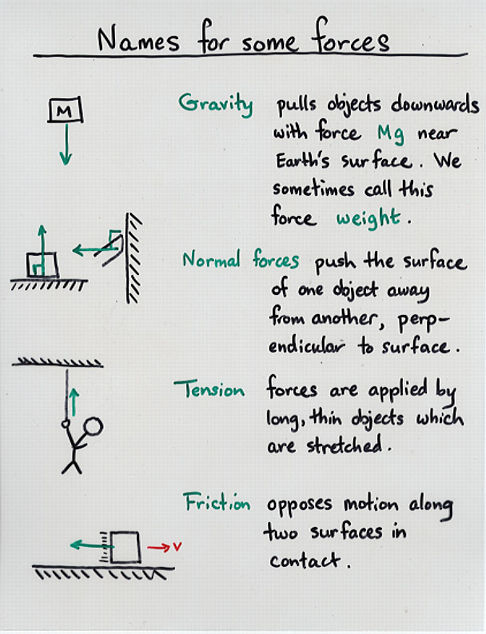

Now we have a fairly complex diagram that visually represents many different forces on our object. We could also include friction from the surface if we wanted to be more realistic. As you can see, this tilt changes the direction of our normal force, but not the force of gravity. We can also tilt the table upwards and push the box up the slope. All we need to do is add an arrow to indicate the force provided by the hand. we can adjust our existing diagram to include that. If we wanted to have a hand pushing the object. In this case, that cancellation is provided by the normal force from the table. No acceleration means a total force of zero, so we must have at least one more force in place to cancel out the force of gravity. Our block is stationary, which means that it is not accelerating. We need to draw the object as a point, and draw the force of gravity pulling down on it. Let's build up to a more complex example. We're going to.ĭraw the object as a point, draw the force of gravity as an arrow, and label our force. If we ignore air resistance, this is an object with just one force applied: the force of gravity. This is very basic example: a falling block. If you have some paper available you should draw the diagrams yourself as we go through the steps. We'll walk through them one step at a time.
#Free body diagrams examples how to#
Let's do a quick refresher on how to draw free-body diagrams. That is something that you will need to practice on your own in order to really understand well.
#Free body diagrams examples free#
The second is a complete lesson on how to deal with angles in forces and free body diagrams. Dealing with torque requires a more complex approach that you'll learn later on in your course. The first is anything to do with circular motion, including torque or centripetal force. To keep the length of this video down, we've had to leave some things out. We won't be talking about things like the magnetic force, buoyancy, and so forth, but when you encounter those in your courses, they can be treated in exactly the same manner as the forces you'll see today. The forces we'll consider today are primarily those we see in the world around us: gravity, the normal force, tension, hands pushing or pulling, friction, and so forth. Finally, we'll want to draw only forces with a substantial impact on the object's behavior, and leave out any that are negligible. The arrows we draw for the forces will be longer for stronger forces, and we'll always draw them as coming from the object. Our diagram will only include forces, and not any other vectors or any other quantities. Rather than trying to sketch an object in detail, we're always going to draw it as a single point. Here are some guidelines to remember when drawing your free-body diagram. We're going to assume that you have drawn a few free body diagrams in the past, so this video will start with only a short refresher of how to draw them before getting into some more difficult and detailed problems. Our objectives are to improve your skill with free body diagrams and to show some of the connections between them and the physical situations they represent. Such representations can be powerful tools for solving problems, and remain useful even for physics experts. Studies have shown that students who understand and use free body diagrams tend to score better on homework, quizzes, and exams. Free body diagrams allow us to represent the forces on an object, thus enhancing our understanding of situations and helping us to solve problems. Physics uses many different representations to aid with problem solving. I am a professor in the physics department at MIT, and today I'll be talking with you about free body diagrams. Representations are used to develop a deeper and more flexible understanding of objects, systems, and processes. Information can be represented in words, through mathematical symbols, graphically, or in 3-D models. This video is part of the Representations video series. Physical problems - for example, calculating the force on the bungee jumper by the bungee cord - are much easier to solve once you've drawn a complete and correct free body diagram. All of these scenarios can be represented by free body diagrams. And this is a golf ball about to be struck.

This is a bungee jumper at the bottom of his trajectory.


 0 kommentar(er)
0 kommentar(er)
